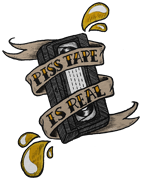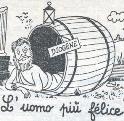|
Those are aerodynamic balances. They help offset the forces on control surfaces as air speeds increase.
|
|
|
|

|
| # ? May 18, 2024 03:46 |
|
Nerobro posted:Those are aerodynamic balances. They help offset the forces on control surfaces as air speeds increase. I kind of figured it was something to that effect. I'd imagine those planes just have cable controls?
|
|
|
|
sandoz posted:
Think of them as power steering for the roll axis.
|
|
|
|
two_beer_bishes posted:Think of them as power steering for the roll axis. Those would be boost tabs ;-) THOSE are killer. they allow a mere mortal to steer a b29.
|
|
|
|
Nerobro posted:Those would be boost tabs ;-) THOSE are killer. they allow a mere mortal to steer a b29. I've been a pilot for a long time and I don't recall ever hearing that term... I think what you're talking about is called an antiservo tabs. The winglets that sandoz is asking about are called aileron spades.
|
|
|
|
Delivery McGee posted:Great Texas Balloon Race at East Texas Regional airport. It's usually earlier in the month, they rescheduled for some reason to the same date as one in Ohio so they had fewer balloons this year. Ah, I see. I was wondering if the pics were from the Ohio event because I didn't see the bees there.
|
|
|
|
Boost tabs move the opposite direction of the control surface, they help in movement against the air flow.. Anti servo tabs move the same direction as the control surface, they prevent over-control or over movement of the control surface, they make movement harder dependant on their rigging. Surface counterweights help balance the surface at neutral and help prevent control surface flutter Spades act similar to boost tabs, but don't themselves move (in relation to the surface they are mounted on) Trim tabs are pilot controlled tabs that allow how the plane to be "trimmed" to level flight forexample to lessen control load. It's easier to tune the size of a spade to get the right feel, vs change the size/rigging of a boost tab Kallikrates fucked around with this message at 01:37 on Aug 4, 2010 |
|
|
|
Kallikrates posted:Boost tabs move the opposite direction of the control surface, they help in movement against the air flow.. Trim tabs and boost tabs the same structure, trimming is just the act of putting your trim/boost tabs in a fixed, non-neutral position. That means the difference between stick-fixed and stick-free cruising. Then again I've never heard them called boost tabs before you posted, but I'm basing this on the fact that what you're pointing out looks exactly like a trim tab.
|
|
|
|
Yes the structure is the same, and the different names stem from how it is used or how it is actuated, since it takes much more than a simple mechanical linkage for one to become the other. Boost tabs aren't used on aircraft with any type of boosting since they aren't needed. And they rarely make planes large enough that require additional mechanical/aerodynamic advantage to move a control surface without using boost packs. http://en.wikipedia.org/wiki/Servo_tab I guess its weird I've never heard them called servo tabs in my circles. Servo tabs and Trim tabs are used for totally different things.
|
|
|
|
two_beer_bishes posted:I've been a pilot for a long time and I don't recall ever hearing that term... Servo tabs are the surfaces used to reduce control forces on large aircraft without hydraulically boosted controls. They always move in the opposite direction of their control surface, which levers the control surface into moving the desired direction. Anti-servo tabs do exactly the opposite, increasing control forces by moving the same direction (but to a larger degree) than the control surface. Anti-servo tabs are most commonly seen on aircraft with stabilators (an all moving horizontal tail), since the large moving surface would lead to a very pitch-sensitive aircraft unless the anti-servo tab was in place to raise the control forces. Aileron spades aren't really servo or anti-servo tabs (they're an aerodynamic balance), since they're rigidly attached to the ailerons and work by effectively countering the mass of the control surface aft of the hinge line, which lowers the stick forces in roll. You'll occasionally see older aircraft with weights sticking forward of the rudder hinge line, which does the exact same thing as spades on ailerons.
|
|
|
|
I'm accustomed to seeing mass balances inside the wings themselves, and aerodynamic balances at the wingtips. You'll see them quite commonly on elevators and rudders. I"m saying that spade isn't there for CG reasons. The spade is there for CF reasons. I'd imagine the use of a spade makes more sense due to the length and high aspect ratio of the control surface. Using an aerodynamic ballance in the middle of an alerion is going to have less flutter and torque issues than you'd find in a nice stocky control surface like a rudder, where using the tip for aerodynamic balance is very common.
|
|
|
|
Nerobro posted:I'm accustomed to seeing mass balances inside the wings themselves, and aerodynamic balances at the wingtips. You'll see them quite commonly on elevators and rudders. Also it's a pretty sweet picture. I love the livery on these planes: 
|
|
|
|
Mobius1B7R posted:Anyone hear anymore info on the C-17 that crashed in Elmendorf? I read it went down like that B-52 did at the airshow. That B-52 went down because the pilot was loving around, doing things he shouldn't have been doing...something he had a reputation for. By all accounts I've read/heard so far, the C-17 was doing nothing out of the ordinary. I'm REALLY looking forward to the results of the investigation. The crew had a good reputation, the C-17 has a drat fine safety record, and Elmendorf developed one of the world's best BASH (bird air strike hazard) mitigation programs in the world after the E-3 crash in 1995. Speaking of which, the C-17 impacted only a few hundred yards away from that site. Since I bought it up... 
|
|
|
|
This seems as good a place as any to ask; how long do those decoy flares dropped from combat aircraft burn for?
|
|
|
|
FEMA summer camp posted:This seems as good a place as any to ask; how long do those decoy flares dropped from combat aircraft burn for? http://www.globalsecurity.org/military/systems/aircraft/systems/flares.htm quote:There are two types of flares, pyrotechnic and pyrophoric.The pyrotechnic flares produce highly visible white light and smoke. When ejected they ignite and produce a large amount of infrared energy for 5 to 10 seconds to distract and confuse the missile�s seeker.
|
|
|
|
Oneiros posted:Click for big.  Click for big. 
|
|
|
|
Holy poo poo that photographer has balls of solid loving steel.
|
|
|
|
Look at how small the people are compared to the F-18 and the F-16, and then look at how small the fighters are compared to the B-2! Click here for the full 1440x816 image.
|
|
|
|
Work was exciting today. http://www.youtube.com/watch?v=l6q-yVMrhw4 http://www.youtube.com/watch?v=vP7t2H3WexE http://www.youtube.com/watch?v=TD268wfWJBA http://www.youtube.com/watch?v=Wr8swXUfq30 Its the Blue Angels, practicing for the Chicago Air and Water Show tomarrow. I work at Oak St. Beach grillin mad burgers and chikaans with these guys over head all day. And then this guy showed up  Illinois Gov. Pat Quinn He shook my hand. YOU GET THOES VOTES! And as a bonus I have to spend the night baby sitting this guy.  Click here for the full 816x612 image. Preoptopus fucked around with this message at 05:17 on Aug 14, 2010 |
|
|
|
co199 posted:Look at how small the people are compared to the F-18 and the F-16, and then look at how small the fighters are compared to the B-2! What are the white lines on the B2?
|
|
|
|
They probably mark safe areas to step for crew/maintainers. AF jets are covered in markings, you just can't see most of them because they're almost the same color as the paint.
|
|
|
|
Cakefool posted:What are the white lines on the B2? Like Godholio said, they're probably areas that someone can stand when working on the airplane, although the two on the top of the cockpit might be there to mark where the ejection seats come out when they're fired. Most airplanes are essentially hollow over large parts of the wing and fuselage, which means stepping somewhere that doesn't happen to have a structural support running underneath it is a very good way to dent a metal aircraft or put a hole in something made of composites.
|
|
|
|
sandoz posted:
Trim tabs? I don't know what you're looking at.
|
|
|
|
Skyssx posted:Trim tabs? I don't know what you're looking at. He's talking about the triangular aileron spades, which can be seen blocking out the second "R" written on the left wing, and between the "E" and "T" on the right wing.
|
|
|
|
BRS is the best thing that has happened to aviation since the piddle pack. Holy gently caress. https://www.youtube.com/watch?v=4a8cntPdRtk
|
|
|
|
Ola posted:BRS is the best thing that has happened to aviation since the piddle pack. Holy gently caress. Agreed like whoa. If I were a small/light aircraft pilot, there's no loving question that I'd have a BRS equipped aircraft. poo poo, I've been flirting with ultralights lately and this got me thinking about the utility of a home-built BRS system for ultralight flight.
|
|
|
|
I'm dreaming about owning an ultralight as well. No way it's going to be without a BRS. There's been two fatal ultralight crashes in Norway this summer, don't think either one had a chute. But both cases was low altitude, stall or engine failure, that thing does need quite a few feet to develop fully. Although in rare cases it can be a liability as well. https://www.youtube.com/watch?v=DVq_uqzgax8
|
|
|
|
Ola posted:BRS is the best thing that has happened to aviation since the piddle pack. Holy gently caress. drat, that's loving awesome. Could you strap one to say, a Cessna 172? How big can you go with em?
|
|
|
|
KYOON GRIFFEY JR posted:drat, that's loving awesome. Could you strap one to say, a Cessna 172? How big can you go with em? Yes: http://www.brsparachutes.com/certified_aircraft.aspx 3400 pounds: http://www.brsparachutes.com/products.aspx
|
|
|
|
KYOON GRIFFEY JR posted:drat, that's loving awesome. Could you strap one to say, a Cessna 172? How big can you go with em? I do believe that BRS Aviation has an STC for the 172 and 182. I'd hate to see the price of one, though. Edit: ^ gently caress.
|
|
|
|
Suicide Machine posted:I'd hate to see the price of one, though. About $20,000, not including installation. 
|
|
|
|
Ola posted:About $20,000, not including installation. Small price to pay for your life. Edit: content forthcoming... I'm getting my tiny flight suit on... ... to fly my tiny-winy cutsey-wootsy lil'fighter:    "Chuck, this is the most adorable little jet! Don't you just want to hug and cuddle it?"  Click here for the full 640x905 image. Behold the majesty of the XF-85. Weights Empty weight 3,740 lb (1,696 kg) Loaded weight 4,550 lb (2,063 kg) Powerplant 1 Westinghouse XJ34-WE-22 turbojet, 3,000 lbf (1,361 kg) Performance Maximum speed 664 mph (1,069 km/h) Service ceiling 48,000 ft (14,630 m) Rate of climb 12,500 ft/min (3,810 m/min) Wing loading 51 lb/ft (247 kg/m) Thrust/weight 0.66 Armament 4x 0.50 in (12.7 mm) M2 Browning machine gun Puttin' my parasite all up in your booty: http://www.youtube.com/watch?v=OeYDfeYXetE http://www.youtube.com/watch?v=5uTDd-lTj54 Sterndotstern fucked around with this message at 18:10 on Aug 18, 2010 |
|
|
|
The Goblin is loving amazing. If I recall, the pilot literally straddled the engine.
|
|
|
|
Boomerjinks posted:The Goblin is loving amazing. Looks that way. That dark line just aft of the cockpit normally indicates the start of the turbine section of the engine.
|
|
|
|
Sterndotstern posted:Agreed like whoa. If I were a small/light aircraft pilot, there's no loving question that I'd have a BRS equipped aircraft. poo poo, I've been flirting with ultralights lately and this got me thinking about the utility of a home-built BRS system for ultralight flight. A BRS is of questionable usefulness for most light aircraft, IMO. The vast majority of loss-of-control accidents in general aviation aircraft occur at low altitudes - specifically, when the aircraft is operating in the circuit (traffic pattern to you Americans) - and are usually caused by nothing more than inattentive handling on the part of the pilot. The issue here is that the BRS requires a certain amount of altitude to deploy properly. In the case of the Rans S-9 in the video, we have a very small aircraft (the S-9's max weight is 710 lb.) that needs a very small parachute, which in turn can deploy rather quickly. With larger aircraft, such as a Cirrus SR-20 or a Cessna 182, you need a rather large parachute that is going to need more time (and altitude) to deploy and inflate fully. In the case of the Cirrus, which weighs roughly 3100 lb, the minimum amount of altitude required to safely deploy the BRS is about 900 feet - which is slightly less than the standard traffic pattern altitude of 1000 feet. If you're below that, as you would be turning from base to final, your chance of a safe, parachute-assisted recovery is virtually nil. Structural failure does occur in general aviation aircraft, but it is fairly rare, and the majority of structural failures occur as a result of loss-of-control while flying in cloud, often as a result of a so-called "Graveyard spiral". As the failure will occur well outside the certified limitations of the aircraft, the BRS is once again of questionable usefulness; there is a maximum speed at which the parachute can deploy safely. By the time the pilot realises that the BRS is their only option, the aircraft will likely be going too fast or will be too low for a safe deployment. A final note on the Cirrus SR-20/22 family; in order to gain FAA certification, this aircraft required the fitment of a BRS, as Cirrus never demonstrated that the SR-20/22 could recover from a spin within the certification guidelines set forth by the FAA. Since all single-engine aircraft must demonstrate recovery from a spin as described in the Federal Aviation Regulations, or have a system in place that would prevent the aircraft from entering conditions that could cause a spin in the first place, Cirrus chose to fit the parachute to satisfy the spin-recovery requirement.
|
|
|
|
MrChips posted:In the case of the Cirrus, which weighs roughly 3100 lb, the minimum amount of altitude required to safely deploy the BRS is about 900 feet - which is slightly less than the standard traffic pattern altitude of 1000 feet. If you're below that, as you would be turning from base to final, your chance of a safe, parachute-assisted recovery is virtually nil. You speak as though deploying the parachute below 900 feet will do nothing at all. I'm sure it would be at least slightly better than no parachute at all when things get horribly hosed. ApathyGifted fucked around with this message at 01:28 on Aug 19, 2010 |
|
|
|
A big weekend at Skydive Deland. There was a big fund raising event coinciding with the 50th anniversary of Joe Kittinger's 102,800 foot exit from a balloon. Joe was on hand signing books, meet and greet, receiving honors, etc. A very nice man, especially given his accolades. In honor of him, there were some big skydiving displays: a 50-way free fall formation, a 25 way canopy formation, the Army's Golden Knights were on hand doing synchronized landings and flying smoke, as well as others including some swooping, accuracy and wingsuit demonstrations. SDD had three planes going the whole time, some crappy pics: Short SC.7 Skyvan and a Pacific Aerospace P-750 XSTOL, http://en.wikipedia.org/wiki/Short_SC.7_Skyvan http://en.wikipedia.org/wiki/PAC_750XL The Skyvan (and other tailgate aircraft are fun jump planes as exiting them can be up to the imagination, do a flip, launch the whole plane load, or send inflatables such as rubber raft).  PAC750  de Havilland Canada DHC-6 Twin Otter, http://en.wikipedia.org/wiki/De_Havilland_Canada_DHC-6_Twin_Otter  Skyvan 
|
|
|
|
ApathyGifted posted:You speak as though deploying the parachute below 900 feet with do nothing at all. I'm sure it would be at least slightly better than no parachute at all when things get horribly hosed. Cirrus did have one instance where a plane was able to do a complete deployment at 400 feet which resulted in 1 seriously injured and 3 uninjured. I'm not sure what the outcome would have been without the parachute. Another note on the Cirrus family, deployment results in a totaling of the aircraft. That's not to say it can't fly again, as there have been a few instances where the aircraft have been repaired, but the damage to the airframe from the system alone is substantial.
|
|
|
|
Both of the UAVs I worked on had flight termination parachutes. The big one (1800 pounds max take off) required 2000 feet AGL to safely deploy. That was more for the pendulum action that occurred directly after deployment. The other had the parachute on the bottom, it was there to save the expensive bits. All deployments I have seen or heard of resulted in the aircraft not being returned to service.
|
|
|
|

|
| # ? May 18, 2024 03:46 |
|
Don't think this has been posted. https://www.youtube.com/watch?v=Xp2Uc9XvmjY Legend Bob Hoover shows us a perfectly coordinated roll. And his slick skills of course.
|
|
|





























